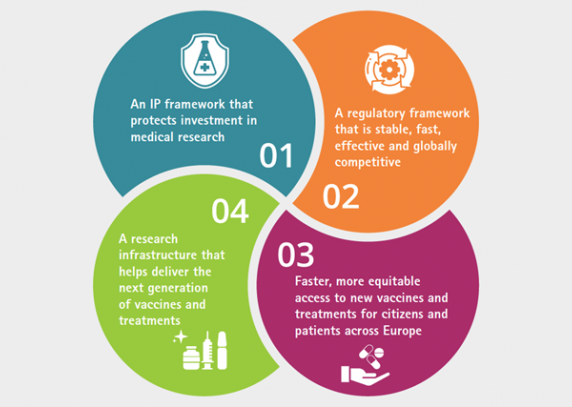
When I qualified from university as a biotechnologist it was an exciting time to be in life sciences in Europe, the region was at the forefront of ground-breaking medical innovation. Today, just 25 years on, 47% of global new treatments are of US origin and more and more new treatments are being approved first in emerging markets such as China. This compares to just 25% emanating from Europe (2014-2018). It represents a complete reversal of the medical innovation landscape since I graduated.
In parallel, Europe’s share of global R&D investment is falling. Over the past twenty years, the region’s research and development base has gradually eroded, with new leading-edge technology research units being transferred out of Europe, mainly to the United States over the past years and more recently to China. Until 1990, Europe led the world in pharmaceutical R&D and innovation, and it has steadily lost ground so that by 1997, for the first time, the US industry overtook its European counterpart in terms of the total amount of R&D expenditure. Between 1990 and 2017, R&D investment in Europe grew 4.5 times, while in the US it increased more than 8 times.
The reasons behind this 25-year downward trend in Europe can be attributed to a number of factors and what is crystal clear is that unless the Commission acts now, the trend will continue and even accelerate in the context of fierce global competition for life science investment.
Therefore, as an industry, we look forward to the publication of the Commission’s Industrial Strategy and the roadmap for the upcoming Pharmaceutical Strategy. Both bring the future of Europe’s life sciences sector into sharp focus and both represent a unique opportunity to work together to reestablish Europe’s global leadership in medical innovation while ensuring access to new treatments and technologies today. This was the call in Commission President von der Leyen’s letter to Commissioner Kyriakides and we hope for an open and constructive dialogue to find shared and concrete solutions to address issues of supply, access and availability of new medicines for patients as well as to create the conditions in which Europe can re-establish itself as a world industrial leader in bringing transformative treatments to patients.
To start that dialogue very concretely, throughout
this document we have outlined steps we believe that Europe can and should take and we look forward to engaging with all stakeholders in the coming months to realise our region’s potential for the benefit of today and tomorrow’s patients. The time is now.
Source: http://bit.ly/333JGo8

